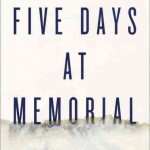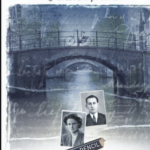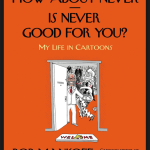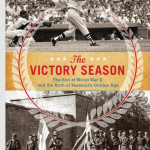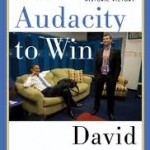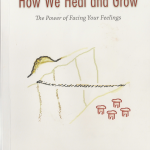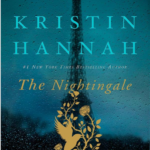Cutting For Stone by Abraham Verghese
Buy now on Amazon: Cutting for Stone
 This book is a fictional story narrated in the first person by someone who spends most of his life in a setting that most of us would not expect to identify with or relate to. That is growing up on the grounds of a hospital in Eithopia with one’s identical twin and loving adoptive Indian parents who are physicians along with the dedicated servant staff including the daughter of one them who is your age. You only know that your biological mother was a nun who died in childbirth and your biological father was a brilliant surgeon at the hospital who fled the country after an abortive effort of crushing the skull of your identical twin in order to try to extract him in a stalled delivery prior to you and your brother ultimately being saved through a Caesarian section performed by your soon to be adoptive father who was internist. Shortly thereafter your adoptive fathers would marry your adoptive mother who was the Ob-Gyn physician at the hospital who happened to be out of the country at the time of the tragic circumstances of the beginning of you and your brother’s life. As unique as all these circumstances seem to be, the subsequent issues in the life of the narrator while unusual are things that do happen in the course of human events and become powerful determinants of one’s life story. Despite being identical twins, the narrator’s brother seems to be on the “autism spectrum”, talking at a late age and usually saying very little, having minimal capacity for experiencing and expressing interpersonal emotions, although being objective to the point of ultimately developing an interest and a single minded obsession in women’s fistulas which leads him to wide recognition for his knowledge and advocacy in this arena . His directness as a young man leads him to a sexual experience with the daughter of the household servant which sets off a crescendo of events that go on through a lifetime of the characters in this book. As is so often the case of lives and events, each intersection makes a change which will be so important in another significant event which will change another one. One misunderstanding or missed opportunity has set up a future event, which will forever change one’s life. Because the author has chosen to follow his characters for significant portions of their life cycle we come to know them in great depth so we empathize with most of them in a very meaningful way. We do pay a price for this depth of knowledge and understanding of the characters as the author has intertwined his narrative with endless detail about external events of climate, vegetation and seemingly unrelated incidental thoughts of the characters. I had to fight my obsessive style of not skipping sentences or paragraphs in a book as I usually deplore the style, which skims ahead for dialog or events in a wordy book although at times I lost this battle. The final reward for reading this book is an insight into one family and a glimpse of life in Ethiopia during the regime of Halle Sal isse as well as a little bit of the feel of the revolution which disposed him . The author being a physician also writes in great detail (sometimes more than you need) about the medical issues of the people who come to the hospital and as well those of some of the characters whom you have come to care bout. He also blends in some ethical dilemmas which not only challenged the characters but will most likely fascinate the reader. In the end the reader has taken a meaningful journey with the narrator and the people close to him and you cannot help but feel you are the richer for it.
This book is a fictional story narrated in the first person by someone who spends most of his life in a setting that most of us would not expect to identify with or relate to. That is growing up on the grounds of a hospital in Eithopia with one’s identical twin and loving adoptive Indian parents who are physicians along with the dedicated servant staff including the daughter of one them who is your age. You only know that your biological mother was a nun who died in childbirth and your biological father was a brilliant surgeon at the hospital who fled the country after an abortive effort of crushing the skull of your identical twin in order to try to extract him in a stalled delivery prior to you and your brother ultimately being saved through a Caesarian section performed by your soon to be adoptive father who was internist. Shortly thereafter your adoptive fathers would marry your adoptive mother who was the Ob-Gyn physician at the hospital who happened to be out of the country at the time of the tragic circumstances of the beginning of you and your brother’s life. As unique as all these circumstances seem to be, the subsequent issues in the life of the narrator while unusual are things that do happen in the course of human events and become powerful determinants of one’s life story. Despite being identical twins, the narrator’s brother seems to be on the “autism spectrum”, talking at a late age and usually saying very little, having minimal capacity for experiencing and expressing interpersonal emotions, although being objective to the point of ultimately developing an interest and a single minded obsession in women’s fistulas which leads him to wide recognition for his knowledge and advocacy in this arena . His directness as a young man leads him to a sexual experience with the daughter of the household servant which sets off a crescendo of events that go on through a lifetime of the characters in this book. As is so often the case of lives and events, each intersection makes a change which will be so important in another significant event which will change another one. One misunderstanding or missed opportunity has set up a future event, which will forever change one’s life. Because the author has chosen to follow his characters for significant portions of their life cycle we come to know them in great depth so we empathize with most of them in a very meaningful way. We do pay a price for this depth of knowledge and understanding of the characters as the author has intertwined his narrative with endless detail about external events of climate, vegetation and seemingly unrelated incidental thoughts of the characters. I had to fight my obsessive style of not skipping sentences or paragraphs in a book as I usually deplore the style, which skims ahead for dialog or events in a wordy book although at times I lost this battle. The final reward for reading this book is an insight into one family and a glimpse of life in Ethiopia during the regime of Halle Sal isse as well as a little bit of the feel of the revolution which disposed him . The author being a physician also writes in great detail (sometimes more than you need) about the medical issues of the people who come to the hospital and as well those of some of the characters whom you have come to care bout. He also blends in some ethical dilemmas which not only challenged the characters but will most likely fascinate the reader. In the end the reader has taken a meaningful journey with the narrator and the people close to him and you cannot help but feel you are the richer for it.


